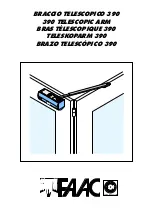
Power Voltage (V)
1 phase, 120VAC / 240VAC, 60Hz
Maximum Output No Load Voltage (V)
61V DC
Rated Input Current (Amps)
120V: 24 Amps 240V: 29.6 Amps
Output Current Range
120V: 30 - 120 Amps 240V: 30 - 180 Amps
Duty Cycle (%) 120V
30% @ 90 Amps 60% @ 65 Amps 100% @ 50 Amps
Duty Cycle (%) 240V
30% @ 180 Amps 60% @ 130 Amps 100% @ 100 Amps
Wire Feed Speed (inch/minute)
120V: 80 - 280 IPM 240V: 80 - 551 IPM
Maximum Material Thickness
5/16”
Weight
25.3 lbs. [11.5 kg]
Dimensions
18” x 8.5” x 13.25” [457mm x 215mm x 337mm]
To order parts and supplies: 800.343.9353 >> eastwood.com
5
DANGER indicates a hazardous situation which, if not avoided, will result in death or serious injury.
WARNING indicates a hazardous situation which, if not avoided, could result in death or serious injury.
CAUTION indicates a hazardous situation which, if not avoided, could result in minor or moderate injury.
NOTICE is used to address practices not related to personal injury.
SAFETY INFORMATION
IMPORTANT NOTE:
These instructions are intended only to provide the user with some familiarity of the Eastwood MIG 180. Electric Welding is a highly complex
procedure with many variables. If you have no prior experience with Electric Welding, it is extremely important to seek the advice of someone experienced in
Electric Welding for instruction, enroll in a local technical school welding course or study a comprehensive how-to DVD and obtain a good quality reference book
on Electric Welding as there is a moderate learning curve necessary before achieving proficiency in Welding different metals such as steel, stainless steel and
aluminum. It is also strongly recommended that the user adhere to the American Welding Society guidelines, codes and applications prior to producing welds
where safety is affected.
Welding can be dangerous to you and other persons in the work area. Read and understand this instruction manual before using this Eastwood welding machine.
Injury or death can occur if safe welding practices are not followed. Safety information is set forth below and throughout this manual. Save these instructions for
future reference.
To learn more about welding safety, read OSHA Title 29 CFR 1910, available at www.osha.gov; ANSI Z49.1, “Safety in Welding, Cutting and Allied Processes,”
available at www.aws.org; and the consumable manufacturer’s Safety Data Sheets.
The following explanations are displayed in this manual, on the labeling, and all other information provided with this product:
READ INSTRUCTIONS
• Thoroughly read and understand this manual before using.
• Save for future reference.
ELECTRIC SHOCK CAN CAUSE INJURY OR DEATH!
• Improper use of an electric Welder can cause electric shock, injury, and death!
Read all precautions described in the Welder Manual to reduce the possibility of electric shock.
• Disconnect Welder from power supply before assembly, disassembly, or maintenance of the MIG Gun, contact tip and when
installing or removing nozzles.
• Always wear dry, protective clothing and leather welding gloves and insulated footwear. Use suitable clothing made from durable
flame-resistant material to protect your skin.
• If other persons or pets are in the area of welding, use welding screens to protect bystanders from sparks.
• Always operate the Welder in a clean, dry, well ventilated area. Do not operate the Welder in humid, wet, rainy or poorly ventilated areas.
• The electrode and work (or ground) circuits are electrically “hot” when the Welder is on. Do not allow these “hot” parts to come in
contact with your bare skin or wet clothing.
• Stay separated from the welding circuit by using insulating mats to prevent contact from the work surface.
• Be sure that the work piece is properly supported and grounded prior to beginning an electric welding operation.
• Always attach the Ground Clamp to the piece to be welded and as close to the weld area as possible. This will give the least resistance
and best weld.
WELDING SPARKS CAN CAUSE FIRE OR EXPLOSION!
• Electric welding produces sparks which can be discharged considerable distances at high velocity igniting flammable or
exploding vapors and materials.
DO NOT
operate electric arc Welder in areas where flammable or explosive vapors are present.
DO NOT
use near combustible surfaces.
Remove all flammable items from the work area where welding sparks can reach
(minimum of 35 feet).
• Always keep a fire extinguisher nearby while welding.
• Use welding blankets to protect painted and or flammable surfaces, rubber weather-stripping, dash boards, engines, etc.






































